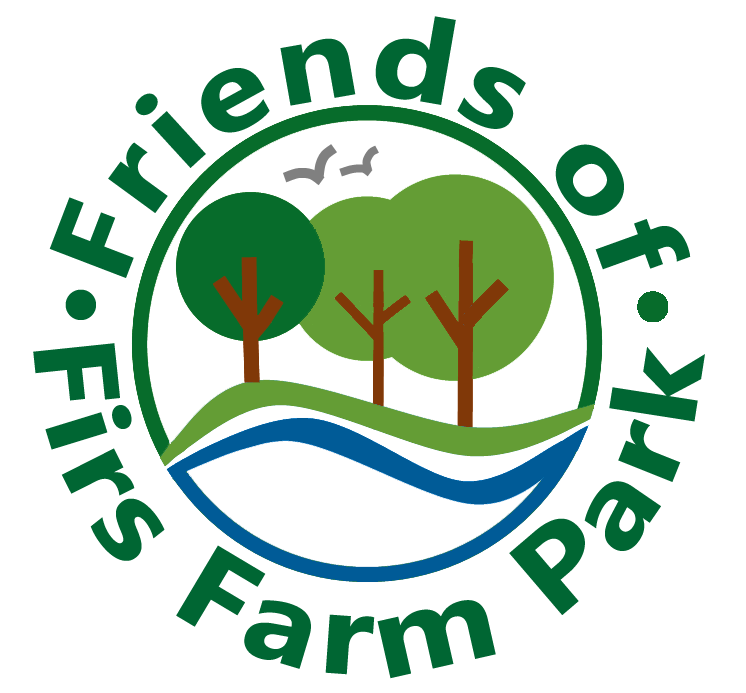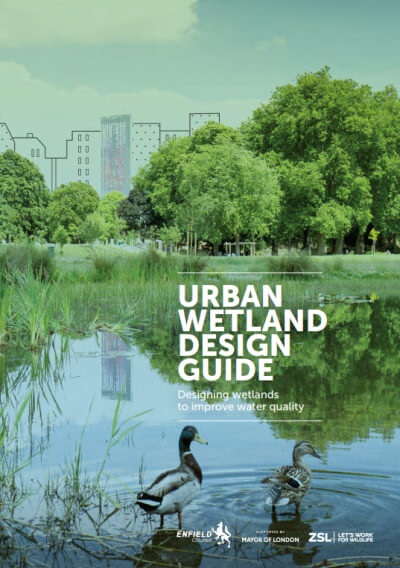Wetlands
From just a field to award-winning wetlands
Firs Farm wetlands are a series of natural and engineered interconnected watercourses and lakes. It is designed to mitigate downstream flooding, improve biodiversity and create a new amenity for people in the local area.
In the beginning
It is a Sustainable Urban Drainage (SuDS) project and Firs Farm was the first SuDS project in the borough of Enfield.
Planning began in 2014, as a partnership between Enfield Council, the Environment Agency, Thames Water, and Thames 21. The primary objective was to reduce the risk of flooding in Edmonton, which occurred in 1949, 1956, 1987 and 2000.

The consultation to repurpose the field, mainly used by dog walkers, got a big thumbs-up from the newly formed Friends group. We launched a major campaign to rally residents to vote for the project in the Mayor of London’s Green Poll.
Enfield Council and the Friends of Firs Farm won £175,000 to kickstart the construction of the wetlands.
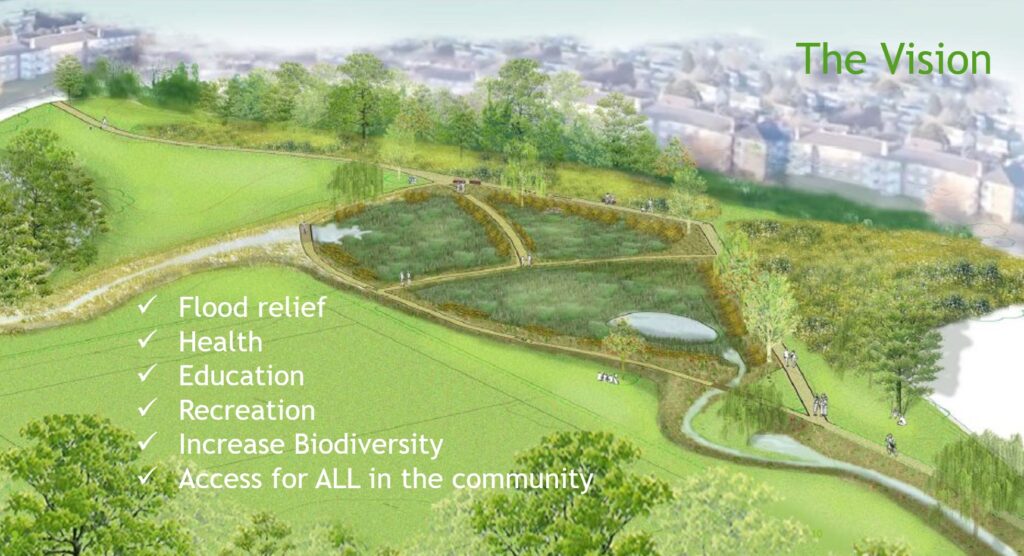
In July 2015, diggers moved onto Firs Farm to start shaping the watercourses and basins; to slow down the water flow. The watercourses can store up to 30,000 cubic meters of water.

During the initial excavations, the Council’s watercourses team came across an underground stream, Moore’s Brook. Dubbed a “forgotten river,” it was ‘daylighted’, brought back to the surface, and now meanders through Firs Farm.
Once water enters Firs Farm, it takes roughly 72 hours to pass through the channels and lakes, before going underground on the eastern side, joining Pymmes Brook. From there, water flows into the Lea, an important tributary of the Thames.

Improving water quality
Water from roads can carry over 300 different pollutants. Known as ‘urban diffuse pollution’, this is a problem for local authorities. As this water flows through densely planted watercourses and reed beds in the wetlands, the plant life filters out pollutants that settle in the sediment. CO2 is the primary greenhouse gas, which is captured and stored for as long as the sediment remains waterlogged.
Did you know that the world’s wetlands store twice as much carbon as all the world’s forests combined? This is why creating new wetlands is a key strategy to combat climate change.
The Friends collaborate closely with Thames 21 and Enfield Council to monitor and maintain the wetlands and waterways. Regular vegetation trimming is essential to ensure the filtration process through the reed beds operates effectively. Wetlands have the remarkable ability to enhance water quality from ‘poor’ to ‘good’ status for some pollutants. The water quality is monitored regularly.
More information about how wetlands improve water quality can also be found on the Thames 21 website
Improving biodiversity
The construction of the artificial lakes and watercourses opened up a wonderful opportunity to foster a much richer natural habitat.
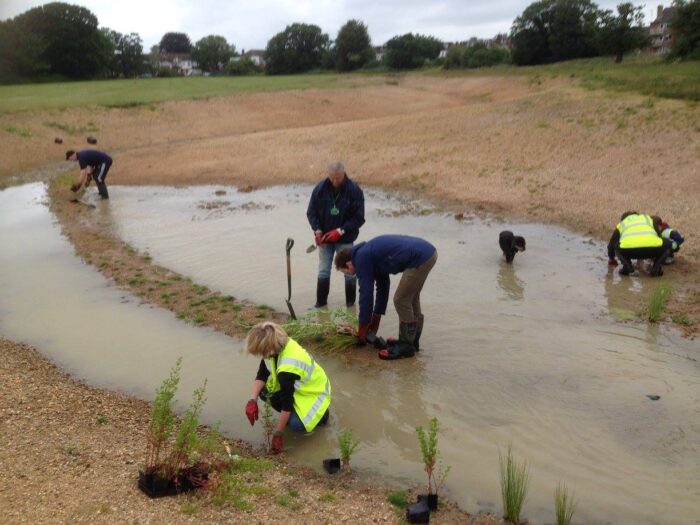
Planting began in Autumn 2015, and in no time, new wildlife ‘residents’ found their way to the new ponds.
Fast forward a decade, there has been a remarkable increase in biodiversity. Alongside the wetlands, Firs Farm boasts a variety of habitats; from ancient hedgerows to woodlands and a newly planted orchard, offering a home to a diverse array of wildlife.
You can find out more on our Wildlife page.
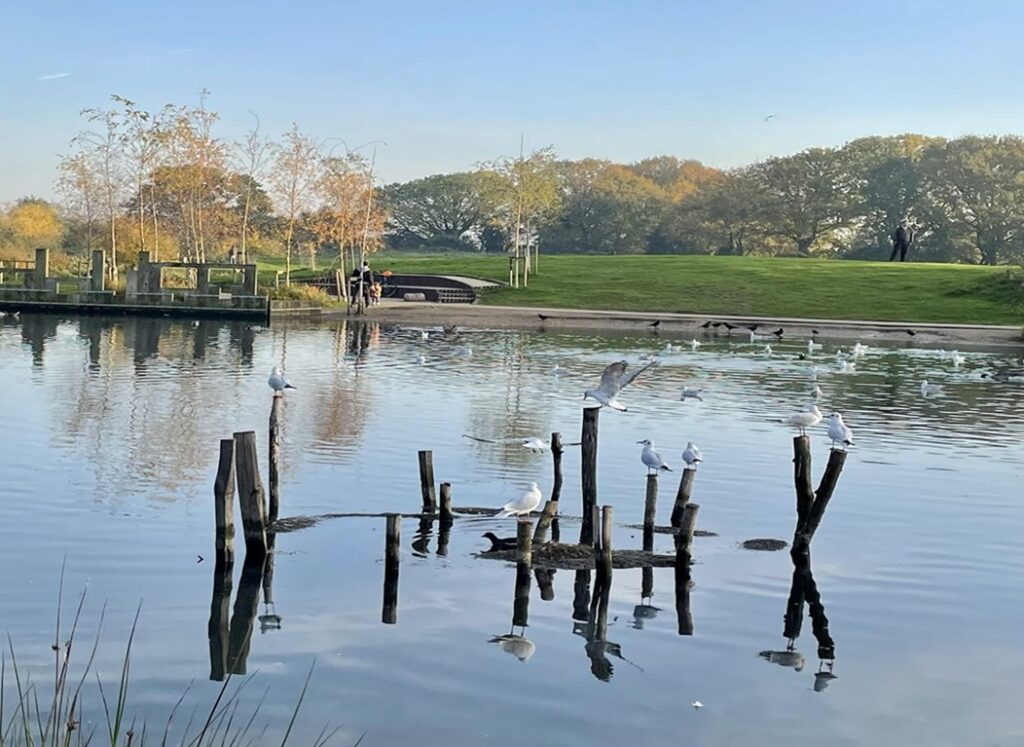
A new blue/green space for local residents
“Well-designed wetlands can also create landscapes for people; making them more desirable places to visit and spend time, delivering wider benefits to the local community and improving public health and wellbeing”. Urban Wetland Design Guide
Right from the start, paths and bridges were constructed to carve out a new amenity for local residents around the wetlands.
Now, Firs Farm has evolved into a cherished green space for the community as well. Listen to Nikesh Taylor explain what Firs Farm means to his family in this short film, produced for the Ashden Awards in August 2023. (See below)
Can a river save a city from flooding?
Recognising Enfield’s achievements
Enfield Council’s groundbreaking efforts in this area have earned recognition, under the leadership of Ian Russell, the council’s Principal Engineer for Structures and Watercourses.
Ian played a key role in co-authoring the Urban Wetland Design Guide – a collaborative effort with the Zoological Society of London (ZSL), published in 2021.
Firs Farm Wetlands have garnered several accolades. Most notably, Enfield Council and Thames 21 received a prestigious Ashden environmental award in the ‘Local Nature Recoverers’ category.
During the awards ceremony in November 2023, both organisations emphasised the vital role of volunteers, that
“local volunteers are at the heart of the action… the scheme brings residents better health and access to nature.”
The Friends of Firs Farm received a special mention!
Firs Farm regularly hosts visits from numerous local authorities. In March 2023, the Friends welcomed a group of water experts participating in the exciting EU funded Hydrousa project; exploring natural solutions for cleaning and reusing water.
For more information on the vital role that wetlands can play in making the world a better place, visit the Wetlands Trust website
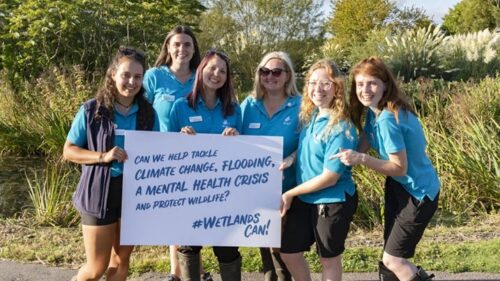
Come down and have a look for yourself what has been achieved!
